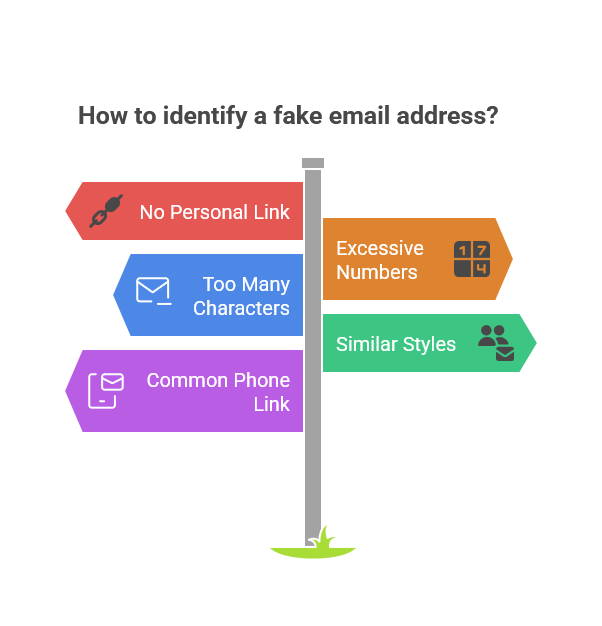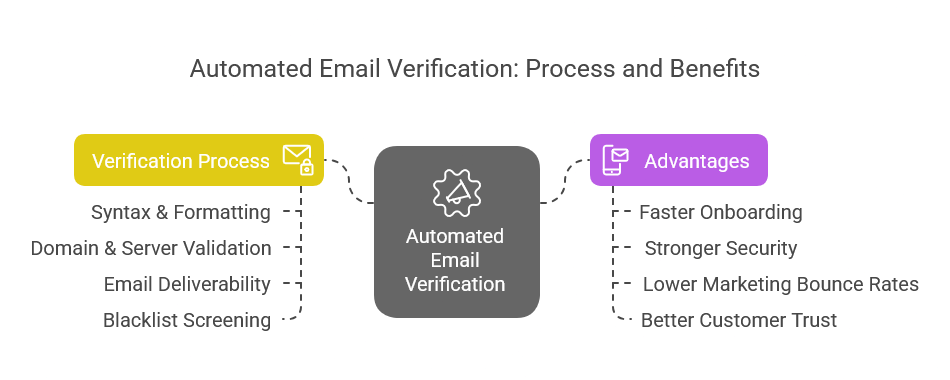Setting up an email account is free and easy. So easy that fraudsters often use it as a way to scam businesses. After all, almost all customer onboarding forms ask for an email. Merely looking at an email address doesn’t say much about it. redpants4life@gmail.com could very well be an existing email account. On the other hand, john0609@gmail.com could be fake.
Allowing a fraudster to create an account with a fake email address can damage your brand’s reputation and lead to financial losses. Fraudulent emails can be used to place unauthorized orders, manipulate discussions, and gain access to sensitive data. The key to preventing this? Email verification.
Email verification protects CRM integrity
Fraudsters often attempt to create accounts using fake email addresses to impersonate legitimate customers. This can lead to unpaid orders, manipulation of online discussions, and various online scams. Worse, fraudulent accounts can compromise your CRM data integrity, exposing sensitive customer information and increasing the risk of fraud.
Verifying emails prevents fraudsters from using fake email addresses to create an account on your platform. Thus, it reduces the likelihood of your customer data being used against them. It also strengthens your brand reputation. In turn, this gives legitimate customers the confidence to share personal information required for more comprehensive customer profiles.
Insights from email data prove legitimacy
Verifying emails can also enrich the email account owner’s profile. Let’s say an individual applies for a loan claiming to be a businessman. However, location data places the individual at a school every time he uses the email address to log into his account. This could prove that the person isn’t who he claims to be. Thus, it protects loan providers from releasing funds.
Common red flags indicating fake email addresses
Some fake email addresses are easier to spot than others. Common red flags you might spot include:
- Email address that has no link to the person’s identity
Most people use their name, date of birth or other personal data to create email addresses.
- Email addresses with too many consecutive numbers
Email addresses with more than 4 digits that don’t look like a year may be fake.
- Email addresses with too many characters
Though email addresses can have up to 254 characters, those with more than 64 characters are likely to be fake.
- Multiple email addresses with a similar style
If anyone tries using email addresses such as adam.towers123@gmail.com and adam.towers456@gmail.com to open accounts, they’re likely to be fake.
- Multiple email addresses linked to a common phone number
Fraudsters often link multiple email accounts to a common phone number to overcome 2-step OTP verification processes.
Fraud prevention through email verification
While verifying email addresses is essential, businesses must ensure that the process does not slow down onboarding. Traditional two-step verification methods can be cumbersome, requiring users to switch tabs, check their inbox, and click a confirmation link before proceeding. Research shows that complex onboarding experiences can drive away 74% of potential customers. This is where automated email verification tools make a difference.

How email verification works
Automated email verification tools integrate seamlessly with web forms and data collection points to verify emails in real time. They check:
- Syntax & Formatting: Identifies typos and invalid structures (e.g., detecting 'gmail,com' and suggesting corrections).
- Domain & Server Validation: Confirms whether the domain exists and can receive emails.
- Email Deliverability: Pings the server to ensure the email address is valid and can accept messages.
- Blacklist Screening: Cross-references emails against spam traps, fraudulent accounts, and politically exposed persons (PEPs).
Why automation matters
Real-time email verification offers several advantages:
- Faster Onboarding: Eliminates the need for users to switch tabs and confirm via email.
- Stronger Security: Prevents fraudsters from using fake or disposable emails.
- Lower Marketing Bounce Rates: Ensures emails are sent to valid, active users, improving campaign ROI.
- Better Customer Trust: Builds a secure, verified database, reinforcing your brand's credibility.
In conclusion
As of 2024, there are 4.48 billion email users across the globe. This is good news for businesses. Of all the communication channels available, email has proven time and again to have the highest ROI. On the flip side, as the number of email users increases, so do instances of phishing scams and impersonation through email. Verifying email addresses when creating customer accounts can help protect you and your customers from such fraud. What’s more, verifying email addresses helps lower the bounce rate from your marketing campaigns and builds a trusted brand image.
Whether you’re an online retailer or healthcare service provider, automated email verification tools are the ideal solution. By integrating automated email verification, you can protect your business from fraud, improve customer trust, and ensure a seamless onboarding experience.
Ready to enhance your email verification strategy?
Book a Free Demo